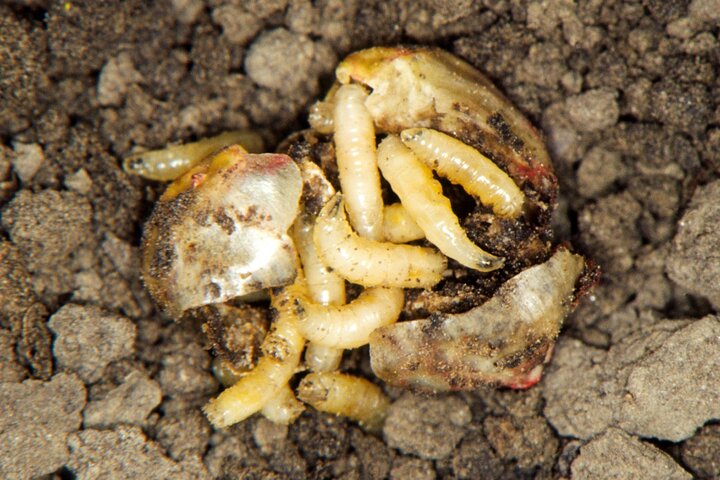We have received several reports of injury from seed corn maggot that has reduced stands of Nebraska soybeans. The greatest risk for seed corn maggot injury is when a green manure or animal manure is incorporated just before planting. The female flies are attracted to lay eggs on sites with decaying organic matter. The seed corn maggot will also feed on germinating crop seeds and can reduce seedling vigor and, if abundant enough, reduce plant stands. In many cases this year, recently killed cover crops may have attracted seed corn maggot to lay eggs in the affected fields. The relatively mild winter this year may have increased winter survival of seed corn maggots. Planting dates this year may have overlapped with peak activity of seed corn maggot flies more than in past years.
The following University of Minnesota recommendations can help minimize injury from seed corn maggots.

Read more about soybean replanting considerations.
Cultural Control
- Delay planting until soil temperatures promote rapid seed germination.
- Avoid planting for at least two weeks after fresh organic materials have been incorporated into soil.
- Degree-day models can guide decisions about adjusting planting date to avoid periods with high larval abundance. Seed corn maggot development is estimated using a base temperature of 39°F (3.9°C) for the degree-day calculation.
- Avoid planting during peak fly emergence. For the first three generations this occurs when 354, 1080, and 1800 degree days have accumulated, respectively since January 1.

Use of a labelled insecticidal seed treatment on corn or soybeans should provide adequate protection against seed corn maggot, except when there are high densities of these insects. Growers not using insecticidal seed treatments can modify their planting dates to minimize injury from these insects by monitoring growing degree days. There are several generations of seed corn maggots in Nebraska.
The Nebraska Climate Office provides degree-day data useful for predicting seed corn maggot development as well as additional pest prediction maps.
The second generation of fly emergence will occur soon in southeastern and south-central Nebraska, so replant situations may still be at risk from seed corn maggot injury.
